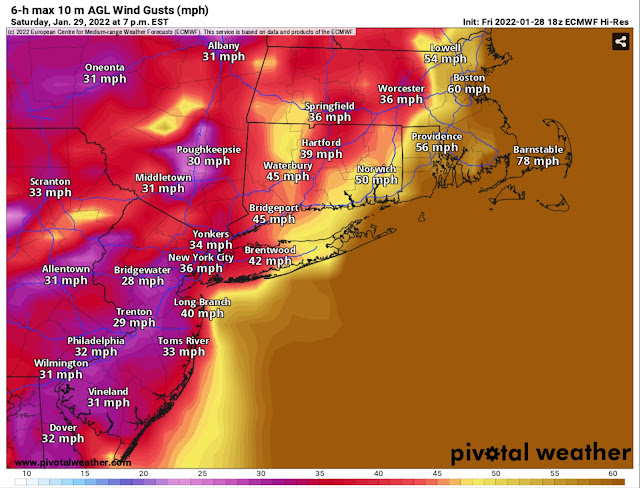FastCast—Wednesday, Jan. 5 to Friday, Jan. 7:
Another round of localized roadway icing is possible overnight Tuesday into Wednesday morning due to temperatures near freezing. Use caution on roads, especially bridges, shaded areas, and side streets.
An impactful weather system with significant rain, potential lowland snow, and major mountain snow will impact Western Washington from midday Wednesday to early Friday. The storm will begin with potential lowland snow as a warm front moves north into the region. Lowland snow is most likely in areas cooled by Fraser River outflow and easterly winds. A Winter Storm Watch is in effect for Whatcom and San Juan Counties and the Cascade Foothills. Snow totals of 2-6 inches are possible in these areas before a changeover to rain by Thursday morning. This probability exists for the Hood Canal Area as well, further exacerbating the ongoing closure of 47 miles of US-101. Light snow accumulations of a trace to around an inch are possible in the rest of the lowlands, but this snow will melt quickly on roads due to the warmer temperatures. Snow is most likely Wednesday evening through very early Thursday morning. Significant lowland rain is expected with this system. Expect rain totals of 2-4 inches in the lowlands by Friday. Urban flooding and standing water are possible, with river flooding possible from King County southward. The mountains will also get dumped on yet again. 1-3 feet of snow are expected at the passes, with brief freezing rain possible at Snoqualmie Pass. Continue reading the blog below for more information about this storm.
———————————————————
An active couple days is ahead for Western Washington, featuring localized lowland snow, significant rain, and more major mountain snow. Let’s begin with the lowland snow potential.
Below is the Euro model forecast for snowfall.
This forecast shows what is most likely…snowfall of 2-6 inches in Whatcom & San Juan Counties and the Cascade Foothills and the Hood Canal area. The Interior Lowlands will receive a trace to 1 inch, with more slightly possible from Snohomish County northward.It is important to note that most snow that falls in the lowlands won’t stick to most surfaces due to warmer ground temperatures (33-35°). Snow that does stick will likely only stick on grassy, non-road surfaces.
The UW WRF model is a bit snowier for most of the region, representing a colder scenario.
This forecast shows 1-3 inches south of Seattle, 2-4” north of Seattle, and 4-8 inches in the favored areas. I expect that this situation is too snowy, but it shows the upper end of potential snow.
In both of these forecasts, the passes receive a whopping 2-3 feet of snow, with up to 4-5 feet at higher elevations. Expect mountain pass closures and very difficult travel conditions.
This storm will also bring significant rain totals to Western Washington. The warm front will increase temperatures from the mid 30s to the upper 40s early Thursday morning. By midday Thursday, the entire region should have transitioned to rain (except the mountains). Below is the UW WRF rain forecast through 4 PM Friday.
This forecast shows significant totals of 1.5 to 3 inches across the Lowlands, with a small Olympic rain shadow. 3-5 inches are possible for areas from Olympia south and west, with 5-10 inches possible on the South/Central Coast and coast mountains.
The NAM model is below, showing a similar situation.
The NAM shows more rain north of Seattle than the UW forecast does. An Olympic rain shadow is still prevalent in this forecast.
Most of this rain will fall within a 48-hour period from midday Wednesday to midday Friday. Due to the short amount of time that significant rain amounts will fall, urban flooding, small stream flooding, and standing water is possible around Western Washington.
Bottom line: significant rainfall totals of 1-3 inches from Olympia northward and 3-5 inches on the coast and south of Olympia are expected. Flooding/bankfull stage on area rivers (mainly from King County southward) is expected from Friday to Saturday. Due to this, a Flood Watch has been issued. (Posted below).
A lot of active weather is expected by Friday! Stay tuned to local meteorologists on Twitter for more information!






















































